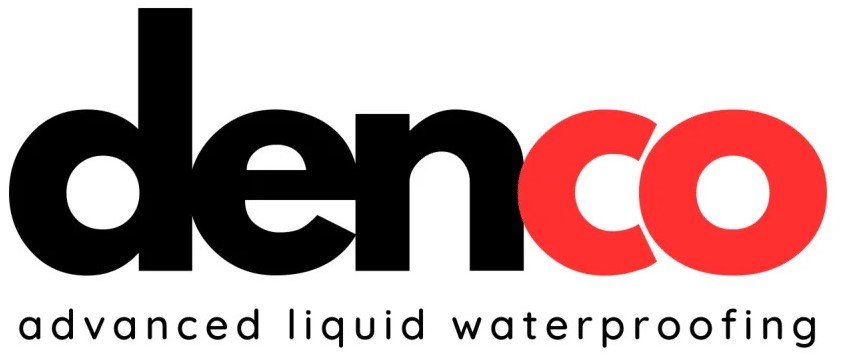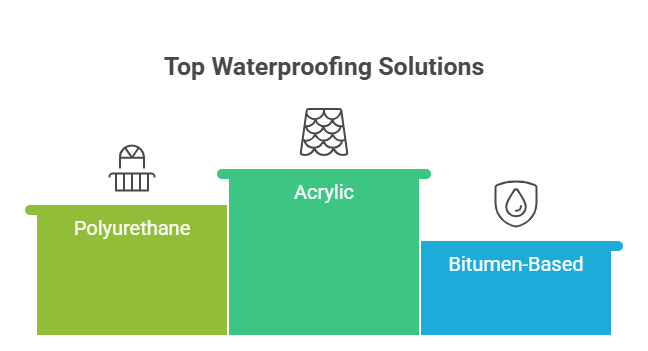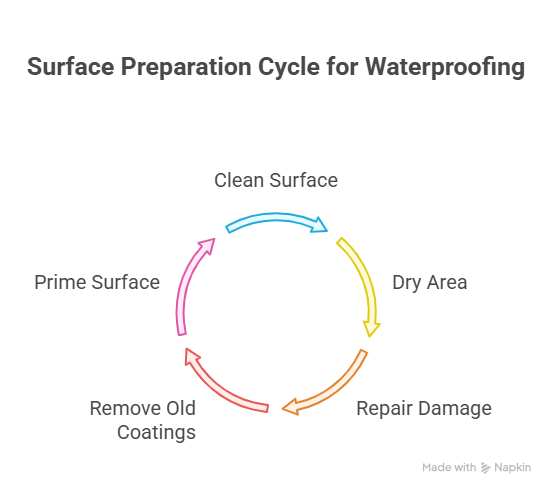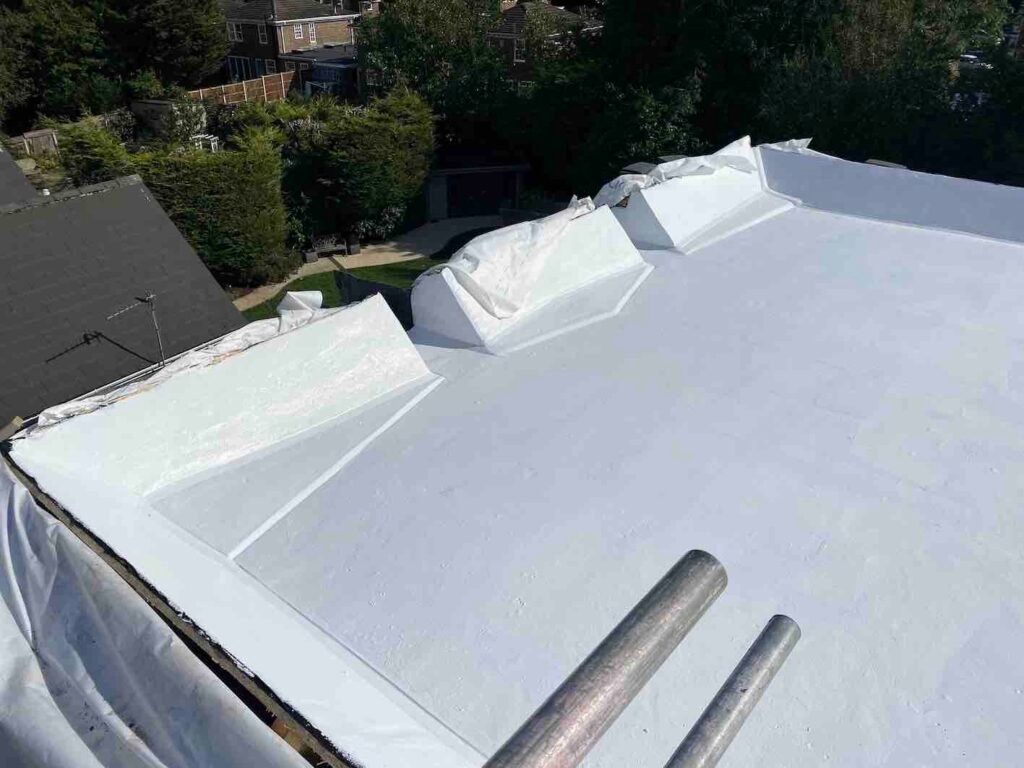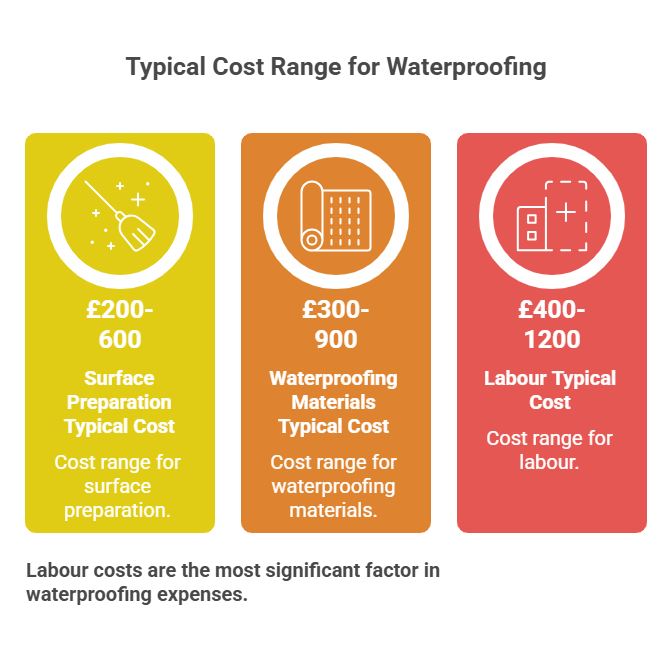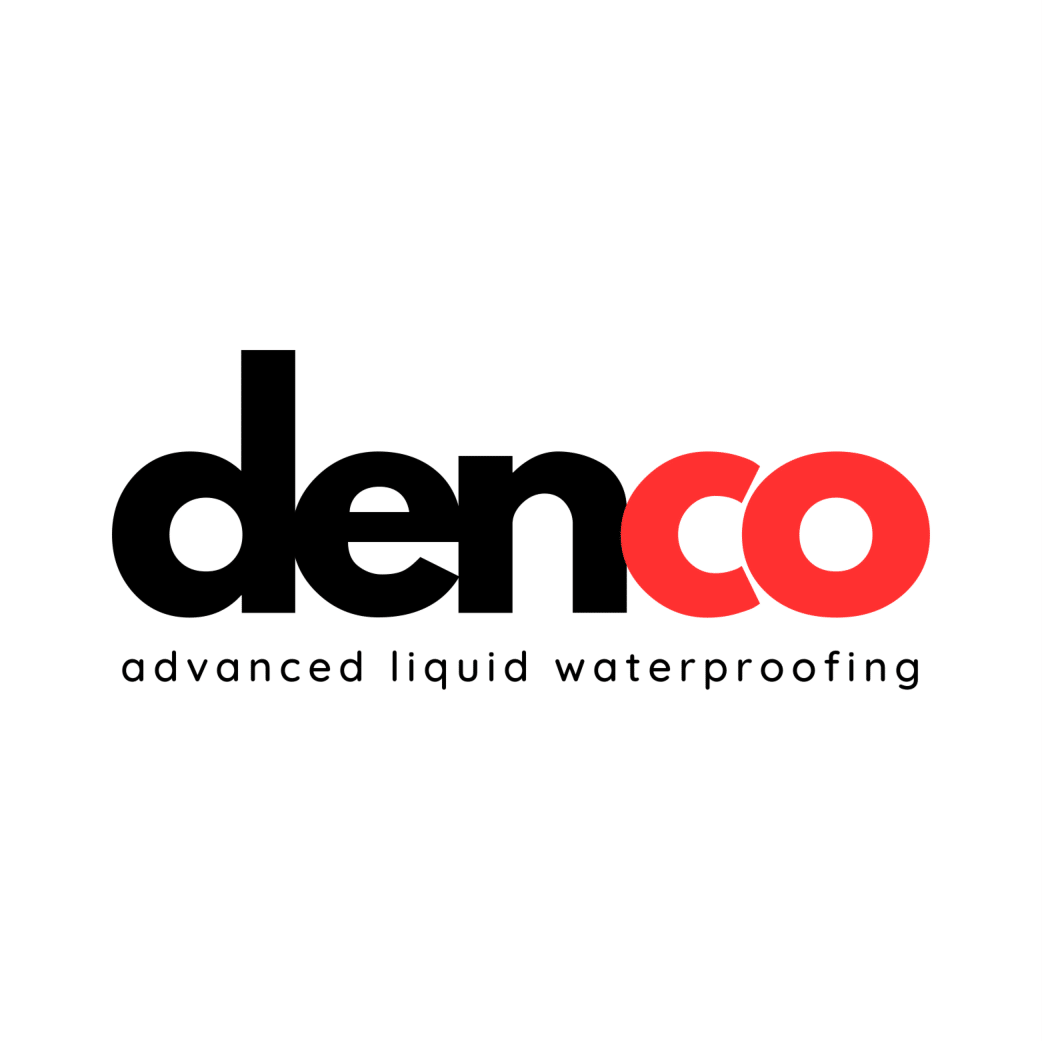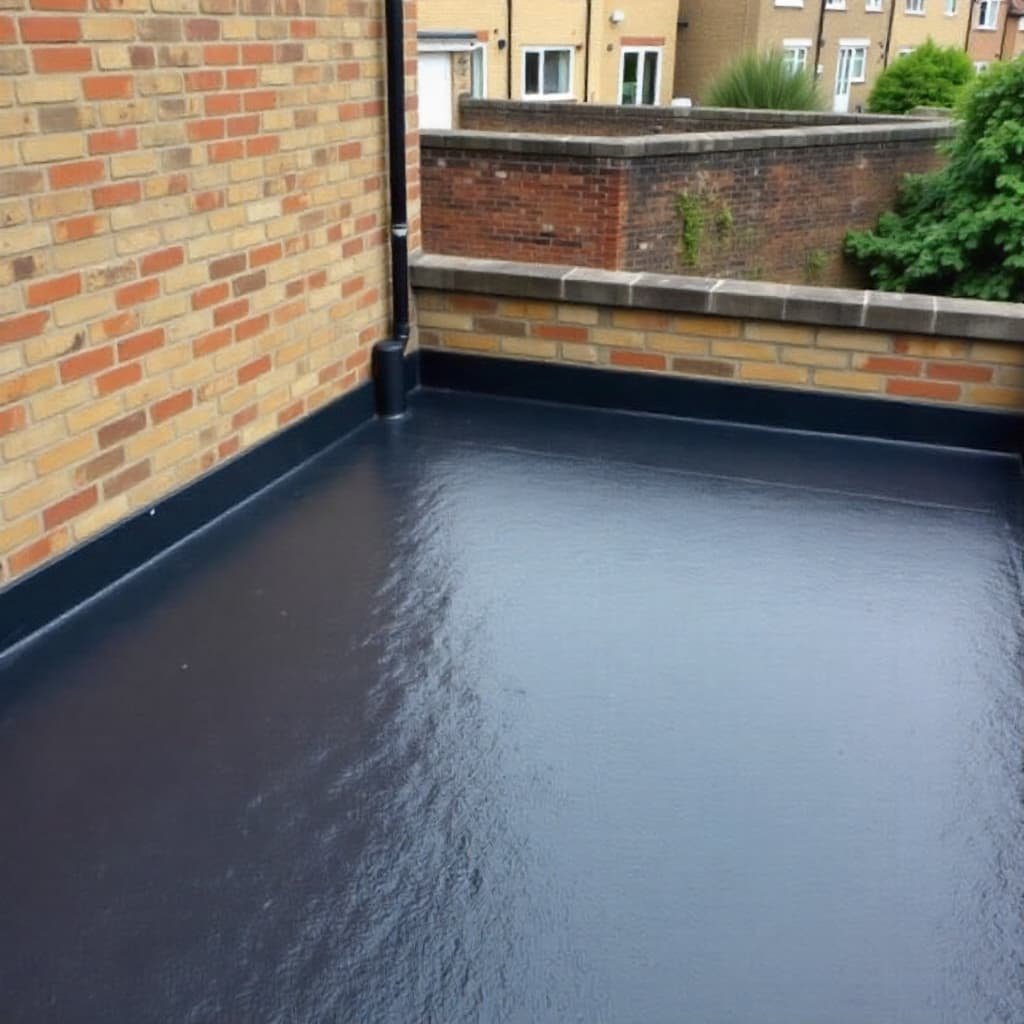
Contents
Our Services
Liquid waterproofing
What Client Say
I would just like to say a big thank you to the Denco team for the work they recently did on our roof, such a great finish. They repaired the old asphalt and covered it with a lovely new grey liquid coating. Leaving the premises very clean and tidy, we are so pleased with the end result. Thank you again guys.
Thank you to Lee and his colleagues from Denco Waterproofing for the outstanding job that they have completed on our balcony. Very impressed with there standard of workmanship and will definitely be having them back to replace the flat roof on our extension soon.
Great work by the Denco Waterproofing lads, very hard working, extremely tidy and the attention to detail was top class. Well done job all round. Many thanks.
Need help?
Don't hesitate to contact us
Send a message
Imagine waking up to a leaking ceiling or finding damp patches on your walls after a heavy London rain. It’s frustrating, costly, and stressful.
But what if you could stop water damage before it starts? Liquid waterproofing gives you an easy and effective way to keep your home dry and safe. This strong solution keeps your London home safe from rain and leaks. It saves you money and brings peace of mind.
Keep reading to learn how to guard your home against the unpredictable British weather.
Liquid Waterproofing Basics
London’s weather often brings heavy rain and damp conditions that can damage homes. Liquid waterproofing offers a strong shield against leaks and water damage. This method uses special liquid coatings. They create a seamless, waterproof layer on surfaces. The liquid fills cracks and gaps, stopping water from entering. Understanding the basics of liquid waterproofing helps homeowners protect their properties effectively.
What Is Liquid Waterproofing
Liquid waterproofing is a process where a liquid material is applied to a surface to create a waterproof barrier. Once dry, this liquid forms a flexible, durable membrane that blocks water. It can be used on roofs, walls, balconies, and basements.
Key features of liquid waterproofing:
- Applied as a liquid, making it easy to cover complex shapes and corners.
- Dries to form a continuous, seamless layer.
- Flexible enough to move with the building, preventing cracks.
- Resistant to UV rays, weather, and chemicals.
This method is popular because it provides full coverage without gaps. It is also quick to apply and requires less labour compared to traditional sheet membranes.
| Advantages | Details |
| Seamless | No joints or overlaps, reducing leak risk. |
| Flexibility | Moves with building, stops cracks from forming. |
| Ease of Application | Can be painted or sprayed on various surfaces. |
| Durability | Lasts many years without losing effectiveness. |
Common Types Used In Homes
Different liquid waterproofing products suit various home needs. The main types include acrylics, polyurethanes, and bitumen-based liquids. Each has unique properties and uses.
- Water-based and easy to apply.
- Dries quickly and resists UV damage.
- Ideal for roofs and exterior walls.
- Cost-effective and eco-friendly.
- Offers high flexibility and strong waterproofing.
- Good for areas with heavy movement or vibration.
- Used on balconies, terraces, and bathrooms.
- Requires careful application by professionals.
- Traditional choice with excellent water resistance.
- Thick and durable but less flexible.
- Often used on foundations and basements.
- May need additional protection from UV rays.
| Type | Best Use | Benefits |
| Acrylic | Roofs, walls | Fast drying, UV resistant, eco-friendly |
| Polyurethane | Balconies, bathrooms | Flexible, strong, ideal for movement areas |
| Bitumen-Based | Foundations, basements | Durable, water resistant, traditional |
Rain Challenges In London
London’s rainy climate creates constant challenges for homeowners. Persistent rain and damp weather increase the risk of water damage. Protecting homes from rain and leaks is vital. Liquid waterproofing offers a strong defense by sealing surfaces and stopping moisture. Understanding London’s rain challenges helps explain why waterproofing matters so much.
Weather Patterns And Impact
London experiences frequent and unpredictable rainfall throughout the year. Rainfall is spread evenly, with no long dry spells. This constant moisture affects homes in many ways:
- Heavy showers can saturate walls and roofs quickly.
- Prolonged dampness causes materials to weaken over time.
- Cold and wet conditions promote mould and mildew growth.
The table below shows average rainfall data for London, highlighting the wettest months:
| Month | Average Rainfall (mm) | Rainy Days |
| October | 60 | 15 |
| November | 55 | 14 |
| December | 50 | 13 |
These weather patterns put pressure on building materials. Water can seep into cracks, causing damage inside walls and ceilings. Cold weather makes materials expand and contract. This creates new spots where moisture can enter.
Typical Leak Issues Faced By Homes
London homes often face common leak problems due to constant rain exposure. These leaks can cause serious damage if left untreated. Typical issues include:
- Roof leaks: Damaged tiles or worn-out flashing allow water inside.
- Wall dampness: Water penetration through brickwork or faulty render.
- Basement flooding: Poor drainage or rising damp causes water entry.
- Window leaks: Faulty seals or frames let rainwater in.
Signs of leaks include:
- Water stains on ceilings or walls
- Mould and mildew growth
- Peeling paint or wallpaper
- Damp or musty odours inside the home
Leaks damage structural elements and reduce home comfort. Fixing leaks early prevents costly repairs. Liquid waterproofing creates a seamless barrier, stopping water from entering vulnerable areas. This solution works well on roofs, walls, and basements, keeping homes dry and safe.
Application Methods
Applying liquid waterproofing the right way is crucial for keeping London homes safe from rain and leaks. The method used affects how well the waterproof layer sticks and performs. Using proper methods creates a strong and flexible barrier. This barrier keeps water out of walls and roofs. This section outlines the key steps to apply liquid waterproofing. This helps keep homes safe and dry.
Surface Preparation
Surface preparation is the first and most important step. It helps the waterproof coating bond firmly with the surface. Without proper preparation, the coating may peel or crack, letting water in.
Steps for surface preparation:
- Clean the surface: Remove dirt, dust, grease, and loose material using a broom or pressure washer.
- Dry the area: The surface must be completely dry before applying the waterproofing liquid.
- Repair damage: Fill cracks, holes, or gaps with suitable filler or sealant to create a smooth surface.
- Remove old coatings: Scrape or sand off any old paint or waterproof layers that are flaking.
- Prime the surface: Use a primer made for liquid waterproofing to improve adhesion and durability.
| Surface Type | Preparation Method | Notes |
| Concrete | Clean, repair cracks, apply primer | Use cement-based filler for cracks |
| Wood | Sand, remove old paint, clean, prime | Ensure wood is dry and free from rot |
| Metal | Remove rust, clean, apply metal primer | Use rust remover or wire brush |
Proper surface preparation leads to better waterproofing results. It extends the life of the coating and keeps homes dry even during heavy London rain.
Step-by-step Coating Process
The coating process follows surface preparation. It involves applying the liquid waterproofing in layers to form a strong barrier. The process is simple but must be done carefully.
- Mix the waterproofing liquid: Stir the product well to ensure an even consistency.
- Apply the first coat: Use a brush, roller, or spray to cover the surface evenly.
- Let the first coat dry: Drying time varies but usually takes 2-4 hours.
- Apply additional coats: Apply 2-3 coats for best protection. Each coat must dry before the next.
- Inspect the surface: Check for missed spots or thin areas and touch up as needed.
- Cure the coating: Allow the final layer to cure fully, which may take 24-48 hours.
Tips for best results:
- Work in dry weather to avoid trapped moisture.
- Apply coats evenly without thick patches.
- Use protective gear like gloves and masks.
- Follow manufacturer instructions for drying and curing times.
Following this process creates a seamless, flexible waterproof layer. It shields London homes from rain and leaks effectively, ensuring long-lasting protection.
Benefits For London Homes
London’s climate features frequent rain and damp conditions that can harm homes. Liquid waterproofing offers a reliable shield against water damage. This method forms a seamless, flexible barrier that blocks rain and leaks effectively. Homes in London enjoy several benefits from this protection. It boosts comfort and lowers repair costs.
Enhanced Leak Protection
Liquid waterproofing creates a continuous, joint-free membrane that stops water from seeping into walls and roofs. Traditional methods like sheets or coatings may leave gaps where leaks can start. The liquid form fills cracks and hard-to-reach areas perfectly.
- Seals all surfaces: Covers curves, corners, and uneven spots without breaks.
- Resists ponding water: Stands up to standing water during heavy rains.
- Flexible and elastic: Expands and contracts with building movements, preventing cracks.
In London, where rain is frequent, this protection is crucial. Water leaks can cause mould, wood rot, and structural problems. Liquid waterproofing helps keep homes dry and safe all year round.
Energy Efficiency Gains
Liquid waterproofing adds an extra layer of insulation to walls and roofs. This helps keep heat inside during cold London winters and blocks heat in summer. Better insulation means less energy is needed for heating and cooling.
- Reduces drafts: Blocks gaps where cold air can enter.
- Improves thermal barrier: Keeps indoor temperatures stable.
- Lowers energy bills: Less use of heaters and air conditioners.
Energy efficiency is important in London homes to reduce costs and carbon footprint. Liquid waterproofing helps create a more comfortable living space with fewer temperature swings. This benefit adds value beyond just moisture protection.
Materials And Products
Liquid waterproofing is key for protecting London homes from constant rain and leaks. The effectiveness of this protection depends heavily on the materials and products used. These products form a flexible barrier. It stops water from getting into walls, roofs, and other surfaces. Picking the right waterproofing material is key. It helps your property last longer, resist bad weather, and stay protected over time.
Popular Brands In The UK
Several trusted brands in the UK offer reliable liquid waterproofing products. These brands focus on quality, ease of application, and strong waterproofing properties. Homeowners and professionals often prefer these products for their proven performance in London’s wet climate.
- Known for its wide range of construction chemicals, Sika offers liquid waterproofing solutions suitable for roofs, basements, and balconies.
- Specialises in coatings that provide excellent adhesion and flexibility, ideal for London’s unpredictable weather.
- Popular for user-friendly products, Ronseal offers liquid sealants that protect exterior surfaces from water damage.
- Provides a variety of waterproofing liquids, including bitumen-based and acrylic solutions, suitable for different surfaces.
Below is a quick comparison of popular products from these brands:
| Brand | Product Type | Application Areas | Key Features |
| Sika | Acrylic Liquid Membrane | Roofs, Walls | Flexible, UV-resistant |
| Thames Waterproofing | Polyurethane Coating | Balconies, Terraces | Strong adhesion, Waterproof |
| Ronseal | Waterproof Sealant | Wood, Masonry | Easy to use, Quick drying |
| Everbuild | Bitumen Liquid | Roofs, Foundations | Durable, Weatherproof |
Eco-friendly Options
Eco-friendly liquid waterproofing products help protect homes while caring for the environment. These products use natural or low-toxicity ingredients, reducing harmful effects on air and water quality.
Many eco-conscious homeowners in London choose these options for their safety and sustainability. These products still provide strong protection against rain and leaks, matching traditional products in effectiveness.
- Low in volatile organic compounds (VOCs), they offer a safer alternative to solvent-based products.
- Made from renewable resources, these membranes are flexible and waterproof.
- Durable and resistant to weather, with a lower environmental impact.
Below is a list of common eco-friendly waterproofing materials and their benefits:
| Material | Source | Benefits | Typical Uses |
| Water-Based Acrylic | Water and acrylic polymers | Low VOC, easy cleanup | Roofs, Walls |
| Natural Rubber | Hevea tree latex | Renewable, flexible | Flat roofs, Decks |
| Silicone Sealant | Synthetic polymers | Weather-resistant, durable | Joints, Cracks |
Choosing eco-friendly waterproofing products supports green building practices and ensures safer indoor air quality. These materials offer a practical solution for London homes facing heavy rainfall and moisture problems.
Maintenance Tips
Proper maintenance ensures liquid waterproofing keeps London homes safe from rain and leaks. Regular care extends the life of the waterproof layer and prevents damage. Simple steps help spot issues early and fix them quickly. Homeowners should follow easy routines to protect their property and avoid costly repairs.
Routine Inspections
Regular inspections are key to maintaining liquid waterproofing. Check your home’s exterior at least twice a year, especially before and after the rainy season. Look for cracks, bubbles, or peeling in the waterproof coating. These signs show the layer may be failing and need attention.
Focus on these areas during inspections:
- Roof edges and joints
- Window and door seals
- Basement walls and foundations
- Balconies and terraces
- Areas exposed to heavy rain or water flow
Use the following table to track inspection findings:
| Area | Condition | Action Needed | Date Checked |
| Roof edges | Small crack | Monitor and repair if grows | March 2025 |
| Window seals | Intact | No action | March 2025 |
| Basement wall | Peeling coating | Schedule repair | March 2025 |
Early detection helps prevent leaks and water damage. Use a flashlight to check dark areas. Keep notes of your findings. This habit keeps your home safe through wet London weather.
Repair And Reapplication
Fixing damage fast keeps liquid waterproofing effective. Small cracks or worn spots need quick repair. Delays cause water to seep in, damaging walls and foundations. Use quality sealants to fill cracks before they worsen.
Follow these repair steps:
- Clean the damaged area thoroughly.
- Remove loose material and dirt.
- Apply a primer if needed for better adhesion.
- Use liquid waterproofing product to cover the spot.
- Let it dry fully before exposing to rain.
Reapplication is necessary every 5 to 10 years. London’s wet climate can wear the waterproof layer over time. Reapply liquid waterproofing to keep surfaces sealed and protected. Check the product instructions for best timing.
Use this checklist to manage repairs and reapplication:
- Inspect for damage twice a year.
- Repair minor cracks immediately.
- Plan for full reapplication every 5-10 years.
- Hire professionals for large areas or severe damage.
- Keep records of all maintenance work.
Consistent repair and reapplication keep your home dry and safe. Protect your investment from London’s rain with simple care steps.
Cost Considerations
Protecting London homes from rain and leaks requires careful thought about costs. Liquid waterproofing is a smart choice that offers strong protection. Understanding the cost considerations helps homeowners make wise decisions. This section explains the expenses involved and the value over time.
Initial Investment
The initial cost of liquid waterproofing depends on several factors. These include the size of the area, the type of surface, and the product used. The process involves cleaning, repairing cracks, and applying the waterproof coating. This can affect the total price.
Key points affecting the initial investment:
- Surface preparation needs time and materials
- High-quality waterproofing products cost more but last longer
- Labour costs vary by location and contractor experience
- Complex surfaces or large areas increase expenses
| Factor | Typical Cost Range (£) |
| Surface Preparation | 200 – 600 |
| Waterproofing Materials | 300 – 900 |
| Labour | 400 – 1200 |
Choosing liquid waterproofing means an upfront investment. This investment secures your home against water damage. It avoids costly repairs that come from leaks. Spending more initially often means better quality and longer protection.
Long-term Savings
Liquid waterproofing protects homes for many years. This reduces the need for frequent repairs and maintenance. Moisture damage can cause serious problems like mould and structural weakening. Avoiding these saves money and keeps your home safe.
How liquid waterproofing leads to long-term savings:
- Reduces water damage: Protects walls, roofs, and foundations from leaks.
- Prevents mould growth: Keeps interiors dry and healthy.
- Extends building life: Stops damage that weakens structure over time.
- Lowers repair costs: Cuts down on expensive fixes and replacements.
| Cost Aspect | Without Waterproofing (£) | With Waterproofing (£) | Savings (£) |
| Annual Maintenance | 500 | 150 | 350 |
| Major Repairs (every 10 years) | 5000 | 1000 | 4000 |
| Replacement Costs | 8000 | 1500 | 6000 |
Investing in liquid waterproofing can save thousands of pounds over time. It protects your home from London’s rainy weather. This makes it a smart choice for long-term security and financial peace.
Reach out to our team for support or inquiries about How Liquid Waterproofing Protects London Homes from Rain And Leaks
London’s weather can be unpredictable — sunshine one minute, rain the next. Denco Liquid Waterproofing helps keep your home safe from leaks and damp by stopping water from getting into your roof and walls.
The flexible coating moves with your building, lasts for years, and needs very little care. No more damp spots or mould — just a dry, comfortable home all year round.
Want to protect your home from rain and leaks? Contact Denco Liquid Waterproofing today — we’re here to help, rain or shine!
All You Need to Know
What Is Liquid Waterproofing For London Homes?
Liquid waterproofing is a protective coating applied to surfaces. It forms a seamless barrier against rain and leaks, ideal for London’s wet climate. This method prevents water penetration, reducing damage to walls and roofs, thus enhancing home durability and comfort.
How Does Liquid Waterproofing Prevent Leaks?
Liquid waterproofing creates a continuous membrane that blocks water entry. It seals cracks and joints effectively, stopping leaks before they start. This flexible coating adapts to surface movements, ensuring long-lasting protection against moisture and water damage.
Is Liquid Waterproofing Suitable For All London Home Surfaces?
Yes, liquid waterproofing works on various surfaces like concrete, brick, and wood. It adheres well to different materials, making it versatile for roofs, walls, and basements. This adaptability ensures comprehensive protection for diverse London home structures.
How Long Does Liquid Waterproofing Last On Homes?
Liquid waterproofing typically lasts 10 to 15 years with proper maintenance. Its durability depends on weather exposure and surface preparation. Regular inspections and timely reapplication help maintain effective protection against rain and leaks.
